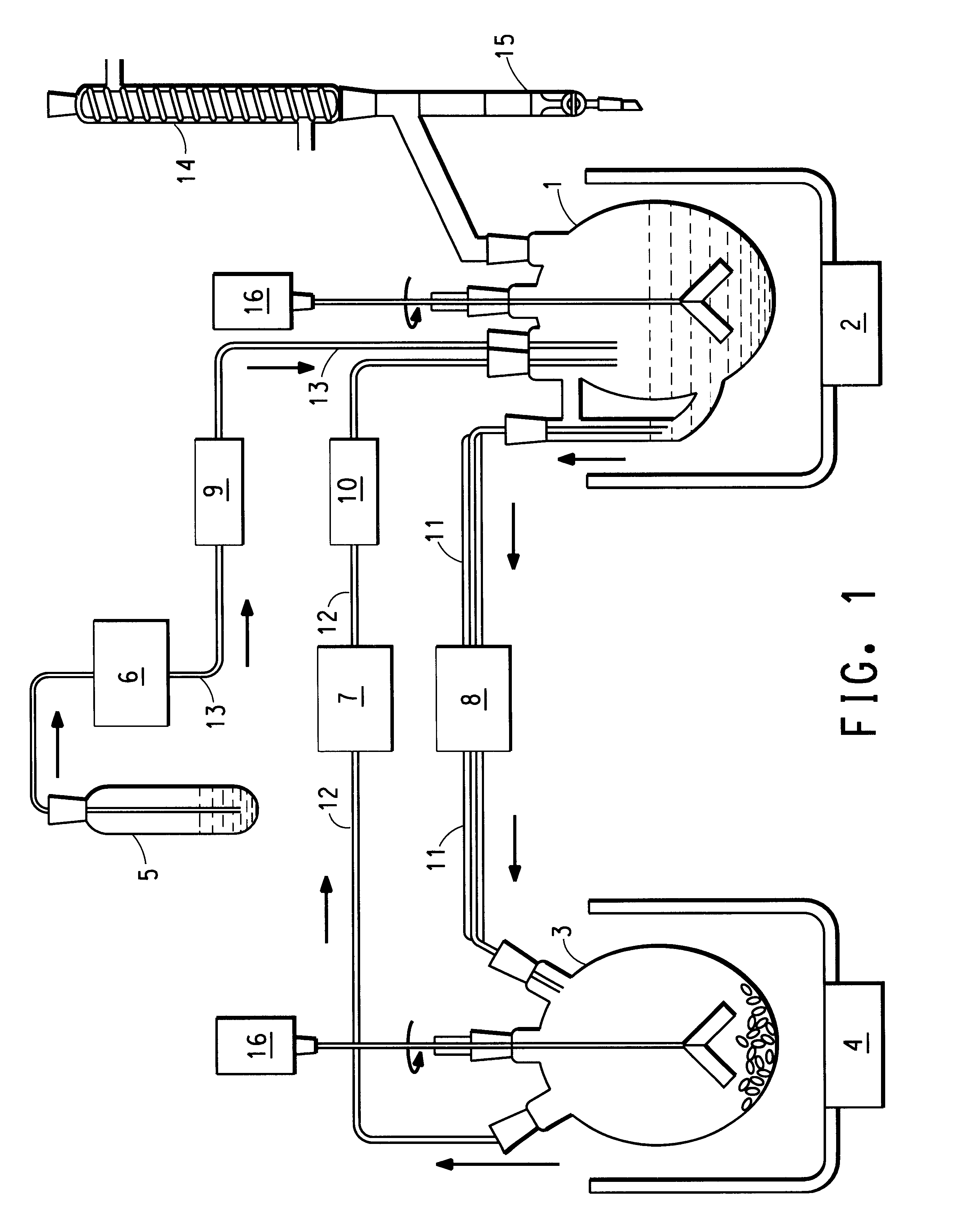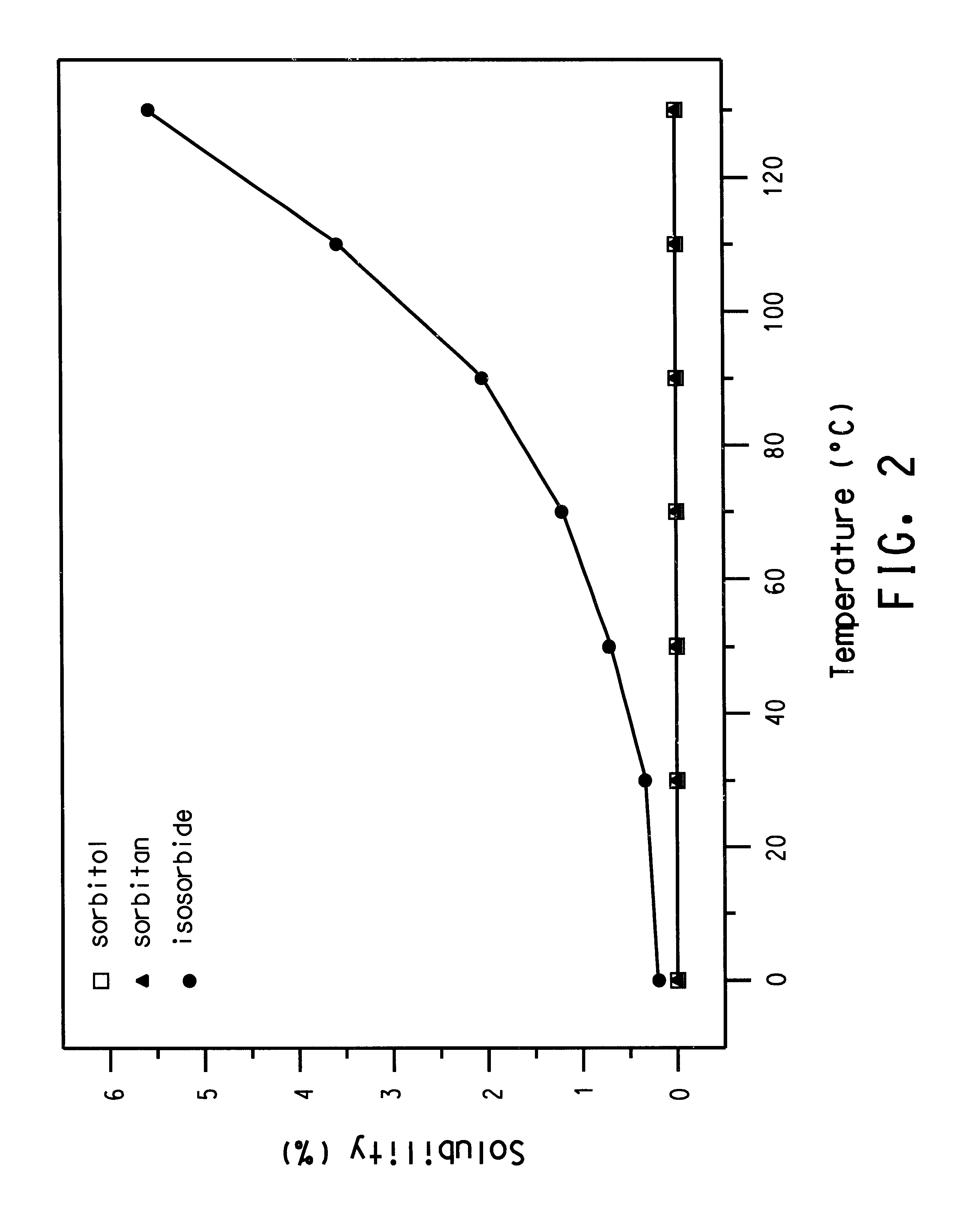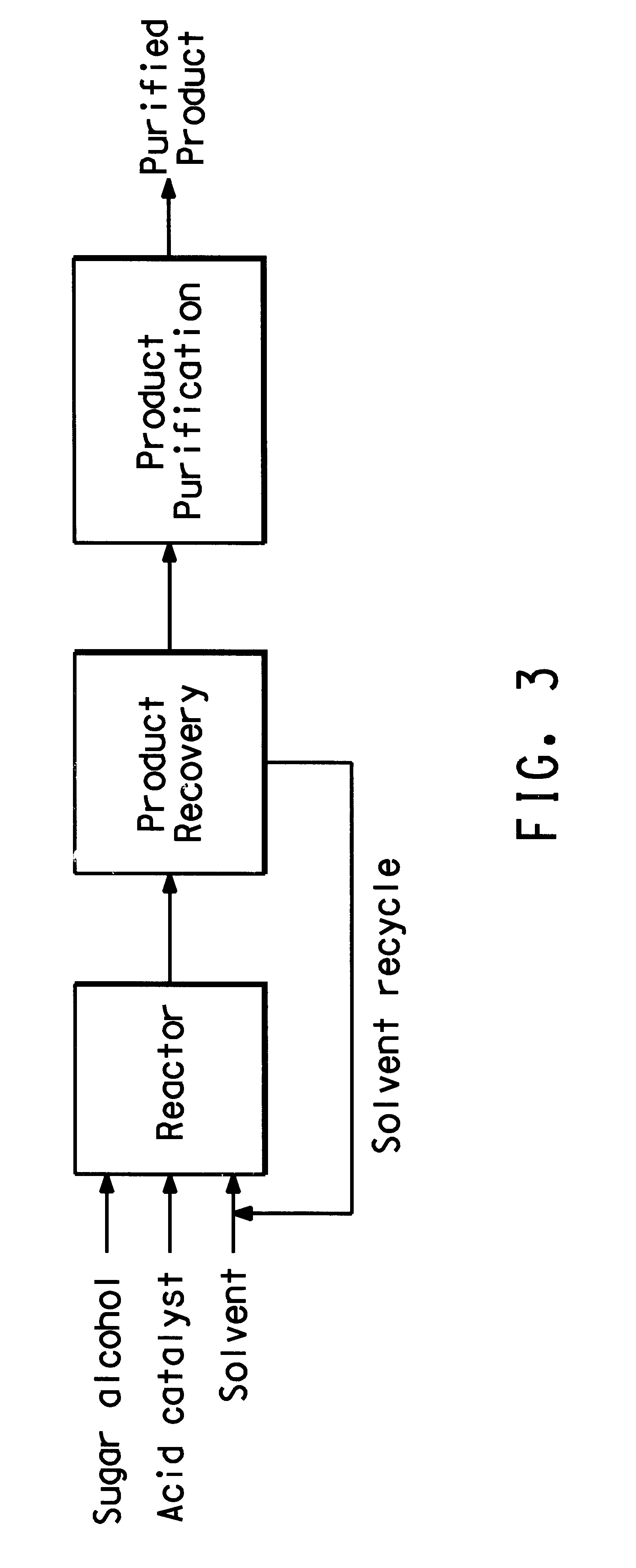Continuous process for the production of anhydrosugar alcohols
a technology of anhydrosugar alcohol and continuous process, which is applied in the field of anhydrosugar alcohol, can solve the problems of affecting the use of polymers, affecting the reaction rate, and charring of end products, so as to minimize the formation of byproducts and contaminants
- Summary
- Abstract
- Description
- Claims
- Application Information
AI Technical Summary
Benefits of technology
Problems solved by technology
Method used
Image
Examples
example 1
In a continuous process of the invention, a reaction flask is loaded with xylene as solvent, water, and H.sub.2 SO.sub.4 as catalyst. The stirring rate is adjusted to 150 rpm. The precipitation flask is loaded with xylene, and the stirring rate is adjusted to 300 rpm. Both flasks are purged with inert gas (nitrogen) to prevent oxidation of the sugar derivatives by air. An oil bath is heated to about 170.degree. C., and a cooling bath is cooled to about -15.degree. C. Pumps are started, and the pumping rates are adjusted to maintain the xylene amounts in the reaction flask and precipitation flask at a rate of at least 2 to 1, respectively. Heaters are switched on for heating materials entering the reaction flask. The temperature of the xylene / reaction product mixture is 85.degree. C.-95.degree. C., while the temperature of xylene returning to the reaction flask after separation from the reaction product is about 120.degree. C. The inner temperature of the xylene / reaction product tran...
example 2
The process as described in Example 1 is repeated, except that the reaction product dissolved in xylene is added to a solution of methanol and then further purified, as demonstrated generally in FIG. 3.
FIG. 3 depicts a process diagram of the reaction, wherein the sugar alcohol, acid catalyst and solvent are fed into a reactor. As the reaction product is generated, it is recovered in the product recovery area. Here, the crude reaction product is separated from the solvent, which is recycled for use in the reactor. The crude reaction product is then further purified in the stage of product purification, resulting in a highly purified anhydrosugar alcohol.
In this particular reaction, the xylene solvent and methanol form a two-part solution at room temperature in the product recovery stage, wherein the reaction product is extracted into the methanol layer. The methanol layer containing the reaction product is then separated from the xylene by decanting. The methanol containing the react...
example 3
This example demonstrates the use of various solvents in the dehydration reaction.
A reaction as described in Example 1 is performed with 1 ml H.sub.2 SO.sub.4 conc. catalyst; 2100 ml solvent; a xylene recirculation rate of 3000 ml / h; a sorbitol dosage (in a 45% solution in H.sub.2 O) of 24 g / h (=132 mMol / h); a reaction flask temperature of 130.degree. to 140.degree. C.; and a precipitation flask temperature of <0.degree. C. The duration of the reaction is approximately 4 hours. Amounts of sorbitol, isosorbide, and intermediates are shown in Table 1.
As shown in the table, best results are achieved by the use of xylene or anisole as the solvent.
PUM
| Property | Measurement | Unit |
|---|---|---|
| Fraction | aaaaa | aaaaa |
| Angle | aaaaa | aaaaa |
| Fraction | aaaaa | aaaaa |
Abstract
Description
Claims
Application Information
 Login to View More
Login to View More - R&D
- Intellectual Property
- Life Sciences
- Materials
- Tech Scout
- Unparalleled Data Quality
- Higher Quality Content
- 60% Fewer Hallucinations
Browse by: Latest US Patents, China's latest patents, Technical Efficacy Thesaurus, Application Domain, Technology Topic, Popular Technical Reports.
© 2025 PatSnap. All rights reserved.Legal|Privacy policy|Modern Slavery Act Transparency Statement|Sitemap|About US| Contact US: help@patsnap.com



